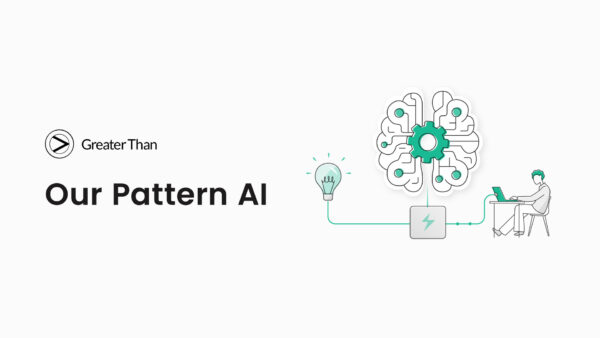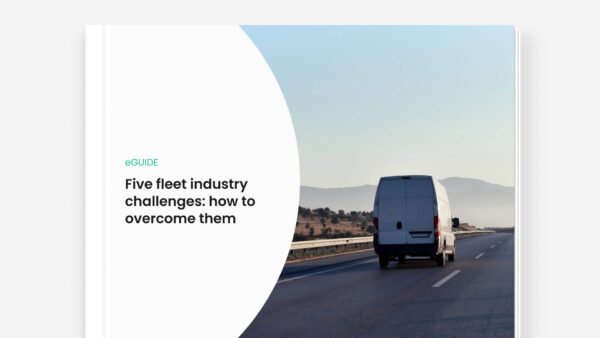
Pattern AI is transforming driver risk management

Gain greater control with a new perspective on driver risk
Telematics has become something of a “go-to” solution for many fleets who recognize the safety and financial benefits of incorporating data on activities such as vehicle location, driver behavior, and fuel consumption into their driver risk management programs. But the needs of fleets are changing fast, to accommodate factors such as mobility-as-a-service, global sustainability efforts, and ever-increasing internal pressures to improve efficiencies while saving costs. Now, artificial intelligence (AI) is enabling driver risk management providers to take their solutions to another level.
A changing fleet landscape
It’s difficult to describe a “typical” fleet today, due to an increase in mobility options – such as car subscription and car-sharing services. Of course electric vehicles (EVs) are also starting to make up a larger proportion of many fleets. On top of that we are seeing more organizations working within the gig economy, and in middle-mile and last-mile delivery. Many of these new fleet types use self-employed drivers in their own vehicles. And, it’s only a matter of time before autonomous vehicles – or at least vehicles with a multitude of anonymous features – are the norm for fleets.
With this changing fleet and mobility landscape, driver risk management providers cannot afford to stand still. Thankfully, AI’s cutting-edge capabilities are continuously improving our ability to understand how the vehicle, the driver, the road, and the environment intersect. The result is a more accurate individual driving measurement for fleet operators, personal vehicle owners, new mobility providers and insurers.
Pattern-based AI doesn’t rely purely on driving events
Driving behavior follows patterns, and today’s technology can start rapidly matching those patterns against almost 7 billion previous trips. Pattern profiling is a giant leap forward from relying solely on “event-based” measurements such as harsh acceleration, braking, and cornering. These provide isolated snapshots of a driver’s behavior and are often a source of friction between end users and telematics service providers. Events can even be wrongly interpreted – for example a telematics solution might record a harsh braking event as negative, when the event was actually the result of a driver slamming on the brakes to avoid hitting a child who ran into the road.
Pattern-based AI measures every second of driving against billions of previous trips, providing a comprehensive picture. It is also consistent across all vehicle types and all locations, so the measurement of risk and how events are generated does not vary between different road users, or different solution providers. Crucially, pattern-based profiling can also be layered onto existing solutions. This adds per-second data on top of driving events – you could think of it as an enhancement layer that fills in the blanks.
Early risk identification and accurate insurance pricing
For fleets, pattern-based AI using real-time data delivers multiple potential benefits, including early risk identification and insurance profitability. Typically, 15% of drivers account for 50% of crashes. At Greater Than, our Crash Probability Score identifies this 15% so prompt risk intervention can be taken. Of course, it also identifies the 85% safest drivers, supporting reward or recognition programs.
Pattern-based profiling also enables risk and safety managers to measure and compare driver risk levels at any time, regardless of vehicle type or location. This helps ensure timely implementation of risk reduction tools, such as training and/or coaching. The accurate measurement of CO2 emissions in our Climate Impact Score also ensures fleets can identify, and report on, their environmental impact, and demonstrate how improvements in driving behavior contribute to CO2 savings.
It’s not just fleets that can benefit
A pattern AI approach to driver risk management also has huge benefits for insurers. Overall, there is a growing acceptance of in-vehicle communication systems to track driving behavior and mobility-as-a-service is a key trend boosting the demand for usage-based insurance for personal lines insurance. However, adoption rates for commercial motor coverage remain stubbornly low. The main barrier is the objection over driving events and how they affect price. However, aggregating single events into driving patterns overcomes most, if not all, these objections and provides insurers with a transparent, easy to understand communication tool, reducing the “mystery” of insurance pricing for customers.
Arming insurers with more decision-making power also gives them a competitive advantage in that they can offer products instantly, no longer having to pore over variables to estimate risk levels. This can be especially useful in a situation such as an unforeseen crisis or pandemic. Rapid changes in market conditions require rapid responses.
When data is accessible on an individual level, it is easy for insurers to create attractive, personalized offers to incentivize and reward loyal customers, including fleets. This can be a crucial factor in increasing customer acquisition and winning customers from competitors. It can also make fleet customers more likely to renew their policies with their current provider.
AI can drive safer behaviors
Accessing deeper driver risk insights can be fundamentally good for road safety. That’s because pattern AI solutions give fleets a clear path to reduce risk and therefore their risk-based pricing. Put simply, the fleets with the safest drivers pay less for their insurance, meaning there is a financial incentive for fleets to encourage safer driving behaviors.
Because individual drivers can see how their own risk levels and CO2 emissions compare with those of their colleagues, and are engaged through gamification features and rewards, a pattern-based approach to driver risk management helps influence safer driving behaviors at the individual level. In turn, this supports global road safety and sustainability efforts, including the United Nations’ 17 Sustainable Development Goals.
Contact Greater Than or book a meeting with me to learn more about what AI and pattern-profiling can do for your business.



